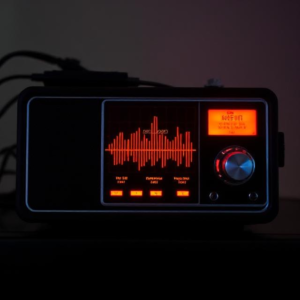Modulation is a way of changing a signal to carry information. The message can travel easily over long distances, like how radio stations send music or news over the airwaves. Modulation is like a tool that helps take a message and wrap it in a carrier wave so it can travel far distances and be received clearly. Whether it’s AM, FM, or phase modulation, it’s all about adjusting the carrier wave to carry information efficiently. When we want to send a message (like music, voice, or data) over a distance, we need a carrier to carry it. A carrier is usually a wave, like a sound wave or an electromagnetic wave (like light or radio waves). Modulation is the process of changing the properties of this carrier wave so that it can carry the information we want to send.

Example:
Imagine you want to send a letter across the country. You can’t just send the letter alone; you need to put it in an envelope. The envelope is the carrier, and the letter is the message. Modulation is like putting the letter (the message) inside the envelope (the carrier), so it can travel safely and be delivered to the right person.
Types of Modulation
There are different ways to “modulate” a signal, meaning there are different ways to change the carrier wave. Here are the most common types:
Amplitude Modulation (AM):
In AM, the strength(or amplitude) of the carrier wave changes according to the information we want to send.
Example: Think of a radio station that uses AM to broadcast music. The strength of the radio wave changes (gets stronger or weaker) to match the sound of the music.
Frequency Modulation (FM):
In FM, the frequency(how fast the wave oscillates) of the carrier wave changes to carry the information.
Example: In FM radio, the pitch or tone of the sound you hear is carried by the frequency of the radio wave changing.
Phase Modulation (PM):
In PM, the phase of the carrier wave is changed to encode information.
Phase is like the position of the wave at any point in time. Changing the phase slightly can represent different bits of information.
Why it is Important
Long-Distance Travel: Modulation allows signals to travel over long distances. Without modulation, a weak signal could get lost or distorted.
Efficient Use of Space: Modulation lets us pack many signals into the same space (like radio channels or internet frequencies). Different carriers can carry different signals at the same time.
Better Quality: Modulation helps preserve the quality of the signal as it travels, even if it passes through obstacles or noisy environments.
How Modulation Works :
Imagine you’re listening to music on the radio. Here’s how modulation works:
- The radio station’s sound (the music) is turned into electrical signals.
- These electrical signals are used to modulate a carrier wave (radio waves).
- The radio wave is broadcast through the air and received by your radio.
- Your radio demodulates the signal by “extracting” the original music from the wave, and you hear it through the speakers.











